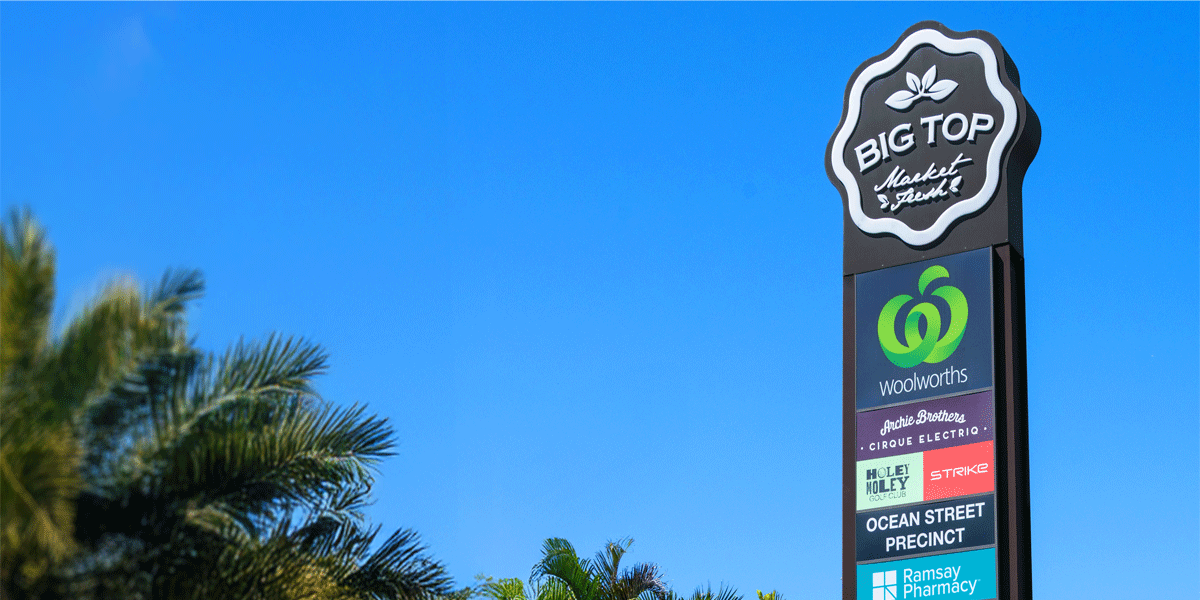 Image: Big Top Shopping Centre, QLD
Image: Big Top Shopping Centre, QLDAustralian everyday retail real estate - such as local shopping centres anchored by supermarkets, pharmacies, butchers and bakers – has emerged as a bright spot in the property landscape in recent years.
These smaller-format assets not only serve quick, ‘everyday’ shopping needs and capture footfall and spending regardless of the economic cycle, but they also bring practical portfolio advantages. Valuations are well-understood, entry points are typically lower (supporting liquidity), there is scope to capture active management upside and yields are solid – making everyday retail a natural complement to larger, regional and super regional centres.
We’re more optimistic than ever about the long-term potential of these assets. Here’s why.
Defensive fundamentals shine
The most compelling advantage of everyday retail is its defensive nature. Because these centres are anchored by non-discretionary retailers – stores selling food, medicine and other staples – sales and traffic are relatively steady even when the broader economy and retail sales are sluggish. That supports retailer health and delivers a steady stream of income for landlords, throughout the cycles. During the COVID-19 pandemic, for example, 70% of tenants across our everyday retail portfolio were classified as essential and continued to operate, therefore not requiring rental abatements and rent relief packages, helping sustain income.
Supermarket anchors add another layer of resilience. Not only do they draw reliable footfall, but they also sign long leases with built-in, sales-linked rent bumps, providing both stability and a partial inflation hedge.
Everyday retail has also proven resilient against online shopping. Its everyday, local role fulfills needs that e-commerce can’t easily replace. In fact, well-located and accessible everyday centres stand to benefit from e-commerce as they increasingly play the role of pick-up points for online orders, which in turn drives incremental sales.
The long-run numbers back this up. Everyday retail centres have demonstrated relatively strong productivity growth per square metre compared to other retail sectors. That productivity, coupled with tightly managed scale1, has allowed everyday retail centres to achieve the highest overall growth in turnover productivity, the most consistent growth in Moving Annual Turnover (MAT) and the strongest speciality rent per square metre growth of any shopping centre sub-class between 2000 and 20242.
The cycle has turned
Current market conditions are giving everyday retail an extra boost.
Australian consumer fundamentals have continued to improve over the past year. Income tax cuts, RBA rate cuts and resilient labour market conditions have driven a rebound in household real disposable incomes following a challenging few years. Strong gains in net wealth, aided by a turnaround in the housing market and ongoing equity market gains, have also helped support confidence. These tailwinds have lifted nominal retail turnover by 4.2% over the year to the September quarter and QIC expect retail sales growth to remain solid in 20263.
On the capital markets side, valuation and cap rates are stabilising, and leasing activity remains strong with vacancies at near record lows. As a result, Australian overall retail total returns have reached their highest levels since 2018 (as at Q2 2025), and retail income returns have outpaced all other core property sectors every quarter since 2021.
Australia’s disciplined planning regime and currently elevated build costs are constraining new retail supply. Keeping pace with population growth alone would require ~2.06m sqm of new retail space over the next five years, yet the active pipeline is only ~700k sqm – roughly one third of what’s required4. That imbalance supports occupancy, rental growth and pricing for existing quality assets.
Expertise unlocks value
While the everyday retail sector offers a compelling opportunity, it isn’t a simple “set and forget” investment. These assets are complex and require experienced, on-the-ground management to truly unlock their value. Each everyday centre has its nuances, and capturing the upside often means being proactive and hands-on.
We focus on a few practical levers:
- Get the mix right. Understand what the community needs and act. Put in more of what locals use every week; recycle out retailers that don’t earn their spot.
- Make space work harder. Right-size tenancies, activate dead corners, support click-and-collect services and distribution hubs.
- Lift the experience, simply. Centre safety, better lighting, clearer wayfinding, easier access, tidy amenities and safe environments.
- Invest in the basics. Investing in maintenance, energy, water, waste is essential to keep the centre running smoothly and its value increasing.
Active management isn’t only about the operational improvements – it’s also about when you choose to sell. Our aim is to finish the job, and once we’ve pulled all those levers (and the pricing is right) we exit and realise value for investors.
It's important to recognise that not all everyday retail centres are created equal. We target assets in strong trade areas with growing populations and increasing retail expenditure. And we don’t necessarily shy away from centres that look a bit tired. Areas of underperformance can instead present value-add opportunities that can be unlocked through active management expertise.
The outlook for Australian everyday retail real estate is bright
This sector combines the dependable cash flows of everyday-needs shopping with supportive macro tailwinds and clear levers for active value creation.
That’s why I believe these everyday shopping centres will continue to deliver solid outcomes for those prepared to harness their potential.
Read more about QIC’s outlook for Australian everyday retail here: The promising outlook for Australian Convenience Retail Real Estate
Citations
- Between 2000 and 2024, the size of the average convenience retail centre has effectively remained the same
- Urbis Shopping Centre Benchmarks, 2000-2024
- QIC Economics
- JLL, CBRE

